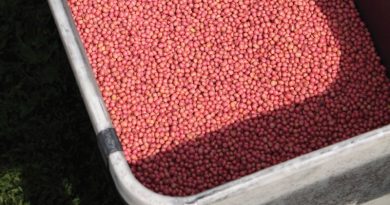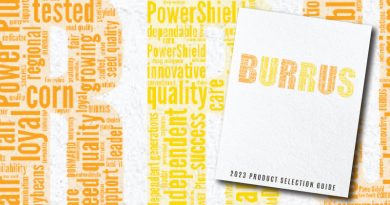Data Driven Hybrid Selection
The annual Burrus Harvest Report provides local plot results and helps guide hybrid selection decisions for the upcoming year. Product selection and placement ranks among the most important decisions that heavily influence next year’s harvest results. This article will help guide data driven hybrid selection decisions on your operation. We always try to pick the products that will do well next year, assuming historical results predict future outcomes. Most growers realize seasons can be dramatically different.
Planting a portfolio of products strengthens the odds of a successful outcome. When looking into your crystal ball, it is important to dissect the previous year’s plot data to determine which products might perform best on your farm. To be clear, there is no product on the market that can overcome inadequate positioning and management. A product will not win each plot every time – the biological world simply doesn’t work that way. We are targeting a hybrid that will thrive and provide consistent performance under your management style year-in and year-out.
Regarding plot data, the high yielders get a lot of attention. Especially if a specific hybrid performs well across many locations. However, there are some questions growers should ask when examining data because there is more to consider than yield alone.
Are my fields and management approach similar to the proof plot I’m viewing?
Focus on results that closely represent your operation. Matching geographies, soil types, planting populations, fungicide usage, fertility, crop rotation and tillage practices can provide valuable insight into how the product will most likely perform on your farm.
What maturity of corn am I after?
If you target the highest yielding product in a plot, chances are high you will select a later maturity hybrid out of the lineup. Why is this? There is a direct correlation between yield and later maturity corn. On average, an additional 1.8 bushels of yield and 0.5 point of moisture are incurred for each day increase in a hybrid’s relative maturity. Many plot results provide a calculated gross income on yield and moisture, assuming a set commodity price and drying cost. This can be a valuable resource to balance the yield vs. moisture challenge you may encounter. Focusing on specific maturity segments can provide a more appropriate method of comparing hybrid products.
How do I gauge how a hybrid will handle stress?
This is where the agronomic data provided in a proof plot can provide key insights into how a hybrid will behave under stress. Check to see if there is root or stalk lodging noted (aka % Erect) because most times, the plant will often cannibalize stalk carbohydrates to complete ear development. This typically occurs where there are instances of disease, low fertility, and moisture stress. It is also good to note product performance in those lighter soil/lower yielding environments. Note whether the hybrid rankings still follow a similar trend or does performance with a particular product fall off. Then determine the probability of that yield level occurring on your farm.
How do I assess variable yield results within a plot?
In the biological world, nothing is 100% uniform, and the same is true for fields. Soil type and elevation frequently change across most fields and the positioning of a product within a plot influences the final yield results. Many proof plots use a check design in which a common hybrid planted multiple times throughout the plot. The goal is to assess whether there is a “yield gradient” across the plot and to measure how much variability is present.
You can access current and historical proof plot results online. Multi-year data can help aid product selection by assessing performance consistency across more environments. While selecting products with an outstanding track record is part of the battle, great positioning and management comprises the rest. Contact your Burrus Sales Representative if you need additional insight into product selection and positioning for your farm.






